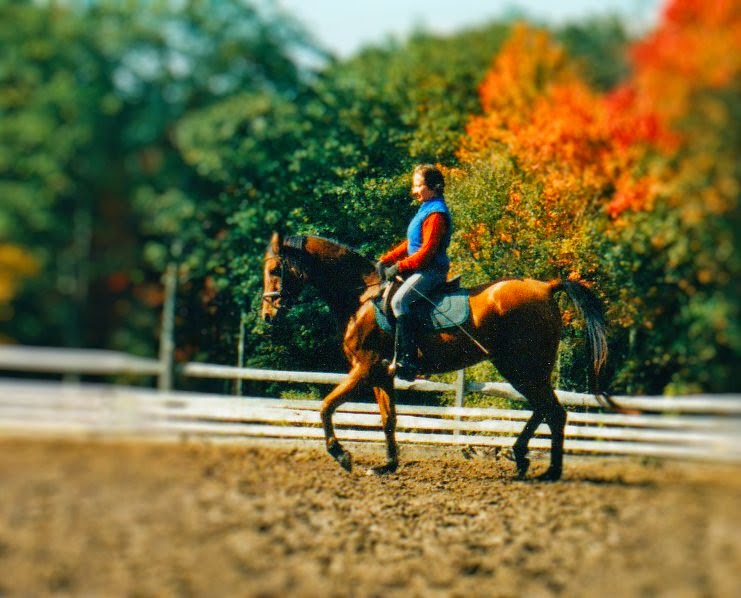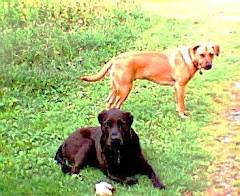Tuesday, September 15, 2009
Swine flu vaccine and Gullaine-Barre Syndrome
Epidemiological studies have shown an increase in GBS cases during the 6-8 weeks following flu vaccination. However, they have also shown a significant increase in cases following flu-like illnesses (3) and have shown linkage to illnesses prior to vaccination. (4)
The bottom line is that Gullaine-Barre Syndrome is a risk without vaccination, a slightly higher risk with vaccination, and the highest risk is if you vaccinate a few weeks after having a flu-like illness.
Still, there are other risks with vaccination. And even though the vaccination for H1N1 will only require a single dose (5), there still will not be enough to go around. So for people who don't have vaccine available, or choose not to vaccinate, herbs that have proven in clinical trials to be effective against flu viruses are available.
Please note that I am not a medical professional and this article is for informational purposes only. This is not intended to substitute for medical advice. Many medicinal herbs can be toxic in specific circumstances and can interact with prescribed pharmaceuticals. Therefore, before taking herbs for medicinal purposes, please consult with your doctor if you are already on prescription drugs, if you are pregnant, or if you develop symptoms of the flu or some other ailment.
References
(1) Doctors told to watch for Guillain-Barre syndrome during Swine flu vaccination programme By Rebecca Smith, Medical EditorPublished: 2:38PM BST 16 Aug 2009
URL at http://www.telegraph.co.uk/health/swine-flu/6038460/Doctors-told-to-watch-for-Guillain-Barre-syndrome-during-Swine-flu-vaccination-programme.html
(2) Doctors on lookout for Guillain-Barré symptoms in swine flu patients. August 16, 2009.
URL at http://www.timesonline.co.uk/tol/news/uk/health/Swine_flu/article6798178.ece
(3) Am J Epidemiol. 2009 Feb 1;169(3):382-8. Epub 2008 Nov Investigation of the temporal association of Guillain-Barre syndrome with influenza vaccine and influenzalike illness using the United Kingdom General Practice Research Database.
Stowe J, Andrews N, Wise L, Miller E.
Immunisation Department, Health Protection Agency Centre for Infections, London, UK. julia.stowe@hpa.org.uk
URL at http://www.ncbi.nlm.nih.gov/pubmed/19033158?ordinalpos=1&itool=EntrezSystem2.PEntrez.Pubmed.Pubmed_ResultsPanel.Pubmed_DiscoveryPanel.Pubmed_Discovery_RA&linkpos=2&log$=relatedarticles&logdbfrom=pubmed
(4) Guillain-Barré syndrome following influenza vaccination.
Haber P, DeStefano F, Angulo FJ, Iskander J, Shadomy SV, Weintraub E, Chen RT. JAMA. 2004 Nov 24;292(20):2478-8 Immunization Safety Branch, Epidemiology and Surveillance Division, National Immunization Program, Centers for Disease Control and Prevention, Atlanta, Ga 30333, USA. PHaber@cdc.gov
URL at:
http://www.ncbi.nlm.nih.gov/pubmed/15562126?ordinalpos=1&itool=EntrezSystem2.PEntrez.Pubmed.Pubmed_ResultsPanel.Pubmed_DiscoveryPanel.Pubmed_Discovery_RA&linkpos=3&log$=relatedarticles&logdbfrom=pubmed
(5) Studies show 1 dose of swine flu vaccine works for adults, good news for busy flu season
By LAURAN NEERGAARDAP Medical Writer
(AP) 07:09:42 AM (ET), Friday, September 11, 2009 (WASHINGTON)
URL at http://start.localnet.com/article.php?article=D9AL2VT00.html
Cytokine cascade and H1N1 Swine Flu
It is the cytokine cascade that gave the recent H5N1 avian flu its virulence, with a 33% death rate.
However, H1N1 does not generally cause cytokine cascades. Researchers are closing in on causes and possible treatments for cytokine cascade. (1) To date, however, this year’s H1N1 has not shown evidence of causing cytokine cascade.
Unlike the normal seasonal flu, H1N1 Swine flu is able to directly infect the lungs, which is what happens in the severe cases.(2) The mortality rate has remained low, with deaths mostly in people with compromised immune systems. In other words, their immune systems didn’t over-respond; they under-responded.
Please note that I am not a medical professional and this article is for informational purposes only. This is not intended to substitute for medical advice. Many medicinal herbs can be toxic in specific circumstances and can interact with prescribed pharmaceuticals. Therefore, before taking herbs for medicinal purposes, please consult with your doctor if you are already on prescription drugs, if you are pregnant, or if you develop symptoms of the flu or some other ailment.
References
(1) Potential Role of High Mobility Group Box 1 in Viral Infectious Diseases.HAICHAO WANG, MARY F. WARD, XUE-GONG FAN, ANDREW E. SAMA, and WEI LIURL at http://www.pubmedcentral.nih.gov/articlerender.fcgi?artid=1782047
(2) Swine Flu: H1N1 Virus More Dangerous Than Suspected, Except To Survivors Of The 1918 Pandemic Flu Virus. ScienceDaily (July 14, 2009) URL at: http://www.sciencedaily.com/releases/2009/07/090713212231.htm
Herbs for the flu -- #1 Elderberry extract
European elderberry has been used medicinally for thousands of years, for everything from colds and the flu to sprains and rheumatism. It turns out there is good reason for this: the chemicals that give elderberries their purple color contain a class of compounds called anthocyanins. They are more potent antioxidants than vitamin C and other common sources. (1) (3) And studies have shown them to be more bio-available than many other berry extracts, including blueberries, cranberries, raspberries, strawberries, etc. (2)(4)(5)
Research studies have demonstrated the effectiveness of elderberry against various strains of flu (1)(6), significantly shortening the duration of the flu with as many as 90% of victims cured within 3 days. It also has demonstrated effectiveness against the H5N1 avian flu virus in laboratory testing. (1)
Effects on the immune system
Elderberry extract has demonstrated that it increases cytokine production, including:
§ interferons
§ interleukins 6, 8 and 10
§ tumor necrosis factor (tnf-ά) (1)
Extracting anthocyanins
Caution: Red elderberry is toxic and should not be used, and the seeds of all elderberries may be toxic. Only fully ripened, dark blue and black elderberries with seeds removed or cooked are safe to use. The clinical tests cited above used European, not American, elderberry.
Elderberry anthocyanins include 6 compounds: cyanadin, delphinidin, malvidin, peonidin, petunidin, pelargonidin.
Anthocyanins are alcohols; they are soluble in water and miscible (infinitely soluble) in alcohol, but insoluble in oil. (6) Therefore elderberry anthocyanins can be extracted in alcohol-based tinctures, elderberry wine, or by decoction or infusion of the berries. Some herbalists note that elderberry leaves behind a messy residue that is hard to clean up after.
For those of us who don’t have elderberry growing in our back yards, or are too busy to make our own medicine, or have an immediate need, a natural preparation of elderberry extract, Sambucol, was approved for use in the U.S. several years ago and is available in many health food stores. Numerous clinical studies have demonstrated the effectiveness of Sambucol against a range flu strains (8) (9) (10), including H3N2, H1N1, type B/Panama 45/90, B/Yamagata 16/88, and others. (10)
Please note that I am not a medical professional and this article is for informational purposes only. This is not intended to substitute for medical advice. Many medicinal herbs can be toxic in specific circumstances and can interact with prescribed pharmaceuticals. Therefore, before taking herbs for medicinal purposes, please consult with your doctor if you are already on prescription drugs, if you are pregnant, or if you develop symptoms of the flu or some other ailment. _____________________________________________________________________________
References
(1) URL at http://www.blackelderberry.info/index.cfm?id=374
(2) Bioavailability of anthocyanidin-3-glycosides following consumption of elderberry extract and blackcurrant juice.Int J Clin Pharmacol Ther. 2004 May;42(5):293-300.
(3) Anti-angiogenic, antioxidant, and anti-carcinogenic properties of a novel anthocyanin-rich berry extract formula.Biochemistry (Mosc). 2004 Jan;69(1):75-80, 1 p preceding 75.
(4) Absorption and metabolism of anthocyanins in elderly women after consumption of elderberry or blueberry. J Nutr. 2002 Jul;132(7):1865-71.
(5) Bioavailablility of elderberry anthocyanins.Mech Ageing Dev. 2002 Apr 30;123(8):997-1006.
(6) Elderberry Research studyRandomized study of the efficacy and safety of oral elderberry extract in the treatment of influenza A and B virus infections.J Int Med Res. 2004 Mar-Apr;32(2):132-40.
(7) Petition to the National Organic Standards Board and the National Organic Program for the
Addition of Elderberry Juice to the National List Section §205.606 URL at: http://74.125.93.132/search?q=cache:EfnMF1LTcswJ:www.ams.usda.gov/AMSv1.0/getfile%3FdDocName3DSTELPRDC5057469+anthocyanin+msds+elderberry&cd=5&hl=en&ct=clnk&gl=us
(8) The effect of Sambucol, a black elderberry-based, natural product, on the production of human cytokines: I. Inflammatory cytokines.Eur Cytokine Netw. 2001 Apr-Jun;12(2):290-6.
(9) Inhibition of several strains of influenza virus in vitro and reduction of symptoms by an elderberry extract (Sambucus nigra L.) during an outbreak of influenza B Panama.J Altern Complement Med. 1995 Winter;1(4):361-9.
(10) The effect of herbal remedies on the production of human inflammatory and anti-inflammatory cytokines. Barak, Vivian; Birkenfeld, Shlomo; Halperin, Tal; Kalickman, Inna. URL at http://cat.inist.fr/?aModele=afficheN&cpsidt=14035424
Herbs for the Flu -- Immune System Overview
Before reviewing relevant medicinal herbs, it seems useful to take a quick look at how the immune system functions. There are basically two parts to our immune system: the innate (nonspecific) and the adaptive (specific) immune responses.
The innate immune response
The innate (nonspecific) part of immune system recognizes the difference between “self” and “non-self.” It includes entire organs and certain white blood cells:
* Skin prevents entry of microbes
* Mucous traps microbes and dust particles that enter the respiratory tract
* Cilia line the respiratory tract, continuously sweeping mucous and trapped debris away from the lungs and out through the mouth and nose
* Reflexive actions such as coughing and sneezing expel invaders
* Chemical barriers, such as stomach acid in the stomach or lysozyme in tears, create hostile environments or contain antibacterial enzymes lethal to many invaders.
* Fever reduces iron in the blood, slowing and stopping reproduction of bacteria and fungi, and also stimulates phagocytes
* Inflammation prevents local infection from spreading, increases the local temperature to stimulate phagocytes, and attracts white cells to the site of infection
* Lymphocytes release interferon, peptides that bind to uninfected cells and stimulate them to produce proteins that will block many viruses from reproducing
* A chemical compound circulating in the blood and lymph system called properdin stimulates a group of proteins called “complement,” which work together to make pathogens more susceptible to phagocytosis, attract phagocytic cells, chemically burn through pathogen cell membranes, change the molecular structure of viruses, and produces other effects to help stop infections.
* Phagocytes called macrophages engulf and “digest” microbes, parasites, and other invaders
* While digesting an invader, macrophages (and other immune system cells) save a piece of the invader’s cell surface (with antigen) to present to T-lymphocytes so they can “learn” to recognize that invader. Which brings us to the adaptive immune system.
The adaptive (specific) immune response
The adaptive (specific) part of the immune system provides resistance to specific pathogens that it recognizes and remembers from prior exposure. T- and B-lymphocytes each carry a particular antigen-receptor cell. They are then able to recognize and respond to specific pathogens that carry that antigen.
T-lymphocytes recognize and attach to the surfaces of foreign cells and interact directly with them. They also produce:
* Cytokines (interferon, interleukins, etc.) that enhance cellular response to antigens, activate more t cells, and stimulate the product of b-lymphocytes
* Toxins that kill foreign cells
* Memory t-cells don’t respond to initial invasions. Instead, on subsequent exposures to the pathogen, they immediately divide into cytotoxic t-cells that attack the pathogen. Memory t-cells may live for years.
B-lymphocytes produce antibodies (Immunoglobulins or IgGs) that recognize specific antigens.
* Often they bind to the pathogens’ antigen and cause pathogen cells to clump together, making it easier for phagocytes to recognize and engulf them.
* They may also bind to toxic portions of a pathogen’s cell surface and neutralize the cell.
* IgG-G and IgG-M also activate the set of proteins called “complement”
* B-lymphocyte memory cells may live for years.
Please note that I am not a medical professional and this article is for informational purposes only. This is not intended to substitute for medical advice. Many medicinal herbs can be toxic in specific circumstances and can interact with prescribed pharmaceuticals. Therefore, before taking herbs for medicinal purposes, please consult with your doctor if you are already on prescription drugs, if you are pregnant, or if you develop symptoms of the flu or some other ailment.
Reference:
David Shier, Jackie Butler, Ricki Lewis. Hole’s Essentials of Human Anatomy and Physiology. New York, NY. 2006. McGraw-Hill Higher Education.




